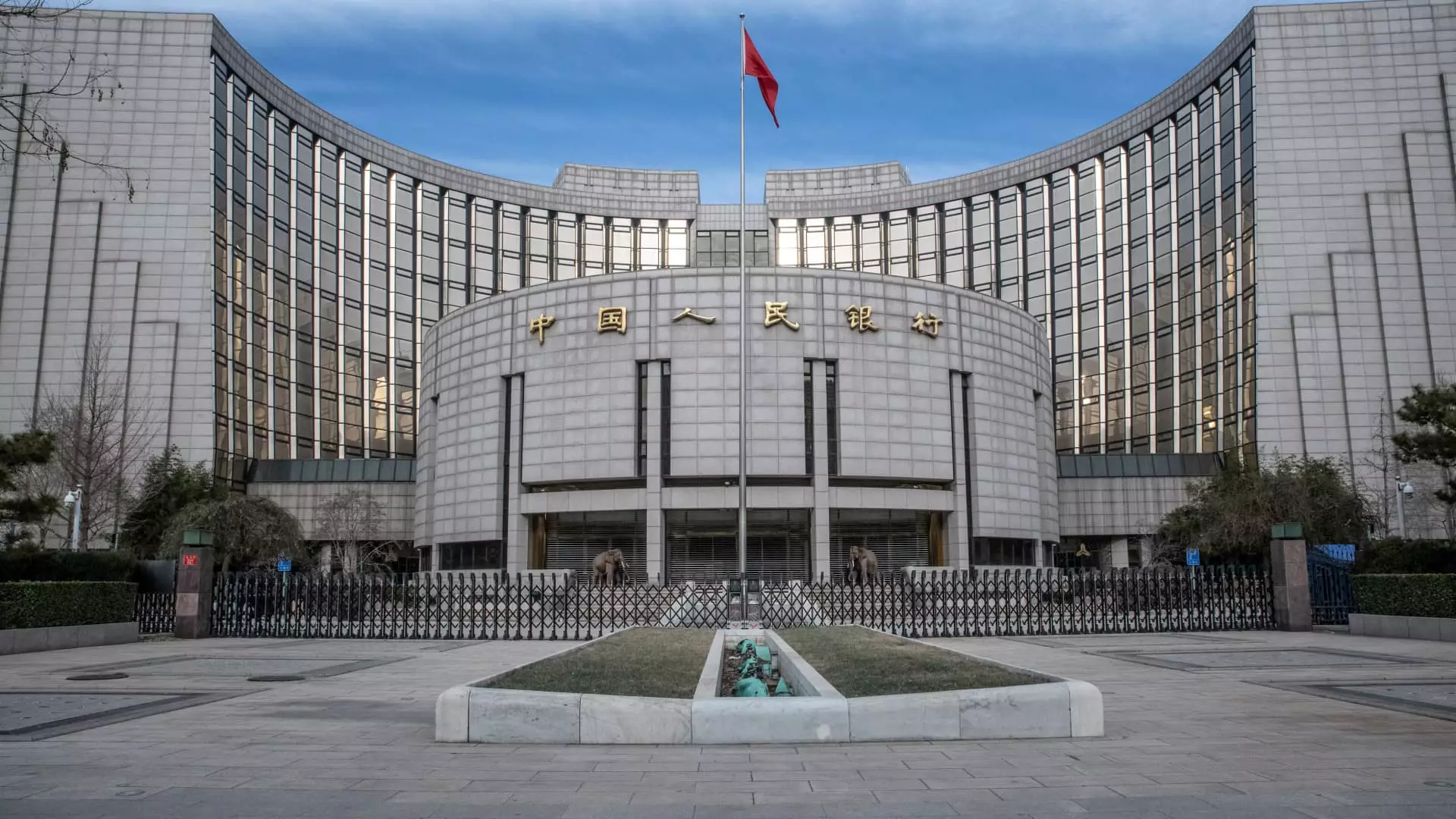In the wake of a sluggish economic recovery, China’s central bank, the People’s Bank of China (PBOC), has opted to maintain its key lending rates, signaling a cautious approach to monetary policy. This decision comes amid an ongoing evaluation of the effectiveness of recent stimulus measures aimed at invigorating an economy beleaguered by slow growth and structural challenges. The PBOC has kept the one-year loan prime rate (LPR) at 3.1% and the five-year LPR at 3.6%, both critical benchmarks that influence borrowing costs for businesses and consumers alike. Market analysts had anticipated this move, asserting that there is no immediate urgency for rate adjustments, thus suggesting a stable yet stagnant economic environment.
The backdrop to this decision is rooted in a broader strategy of economic stimulus, which has included various government initiatives aimed at bolstering domestic demand amid a protracted property slump and waning consumer confidence. Economists like Bruce Pang, from JLL, have noted that the current state of net interest margins at Chinese banks—record lows—has constrained further reductions in lending rates. As a result, while the PBOC may hold off on additional rate cuts in the immediate future, opportunities for future decreases particularly in 2025 still remain on the table.
Against this context, we have observed an array of stimulus pledges starting from late September, encompassing substantial fiscal packages aimed at addressing local government debt issues. One such initiative was the unveiling of a 5-year fiscal package valued at approximately 10 trillion yuan ($1.4 trillion). Despite these aggressive measures, China’s economic indicators, including industrial production and fixed asset investment, have pointed towards subdued growth rates, highlighting the challenges that persist even in light of governmental intervention.
Interestingly, while many sectors are experiencing a lull, retail sales offered a glimmer of hope with a 4.8% year-on-year increase, hinting that certain areas of the economy might be positively affected by the recent stimulus efforts. However, the apparent resilience in retail does not overshadow the significant declines in real estate investments, which have continued to tumble. The mixed indicators underscore a portrait of an economy riddled with contradictions; while some underlying dynamics suggest cautious optimism, broader structural issues plague the economic landscape.
As analysts look toward the future, they anticipate growth rates to slow, with institutions like Morgan Stanley forecasting around 4% growth in both 2024 and 2025. This is further compounded by risks associated with a deflationary environment and escalating trade tensions, particularly following Donald Trump’s return to the political stage—potentially signaling a new wave of tariffs on Chinese exports. Goldman Sachs has also revised its projections, stating that GDP growth might decrease to 4.5% by 2025 from 4.9% in the current year, displaying a cautious stance while maintaining a positive outlook on equity markets.
The ongoing uncertainty poses a significant challenge to China’s export-driven economy, which has historically relied on robust international trade relationships. In this light, the forthcoming decision-making by policymakers regarding monetary and fiscal strategy will be crucial. The aforementioned entities are likely to face scrutiny regarding the effectiveness of front-loading fiscal stimuli aimed at propelling consumption and stabilizing the housing market.
China’s central bank faces a complex balancing act: stimulating economic growth while managing the risks inherent in its financial systems. The current monetary policy reflects a mindset entrenched in caution and pragmatism, driven by the understanding that premature adjustments could derail recovery efforts. As the PBOC remembers the lessons of past economic fluctuations, the hope remains that a measured approach can maneuver the country through its current economic malaise into a period of renewed growth. Future initiatives will need thoughtful calibration to ensure they effectively address the intertwined issues of consumer confidence, investment flows, and the broader global economic context.

Leave a Reply